Abstract
1. The visual evoked response to a grating target of varying spatial frequency was examined for normal subjects and for subjects with meridional amblyopia. This condition, reduced visual resolution for specific target orientations, is associated with, and thought to result from, marked ocular astigmatism. 2. For normal subjects, the general relation between spatial frequency and the evoked response is similar to psychophysical contrast sensitivity data. Evoked response amplitudes to oblique gratings are typically reduced and this is analogous to the lower acuity for oblique compared to horizontal and vertical detail. 3. In addition to the oblique effect, the magnitude of the evoked response for meridional amblyopes depends upon grating orientation over most of the spatial frequency range tested (0-5-16 cycles/deg). The lowest evoked amplitude is found when stimulus grating orientation matches that for which acuity is reduced. 4. The evoked potentials spatial frequency response functions are qualitatively similar to contrast sensitivity functions determined with the same abnormal subjects. 5. From these results, it may be concluded that the physiological locus of meridional amblyopia is confined primarily to structures at or prior to the site of evoked potential generation.
Full text
PDF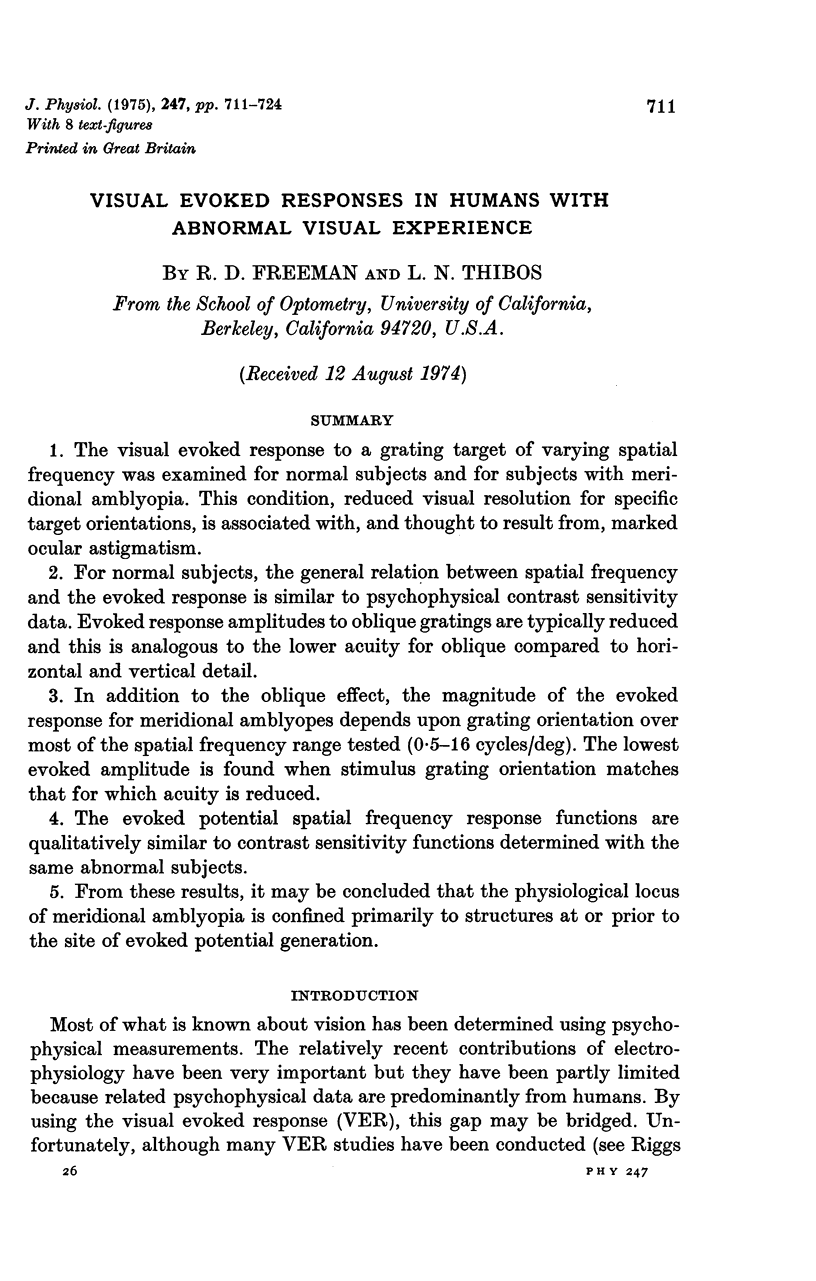
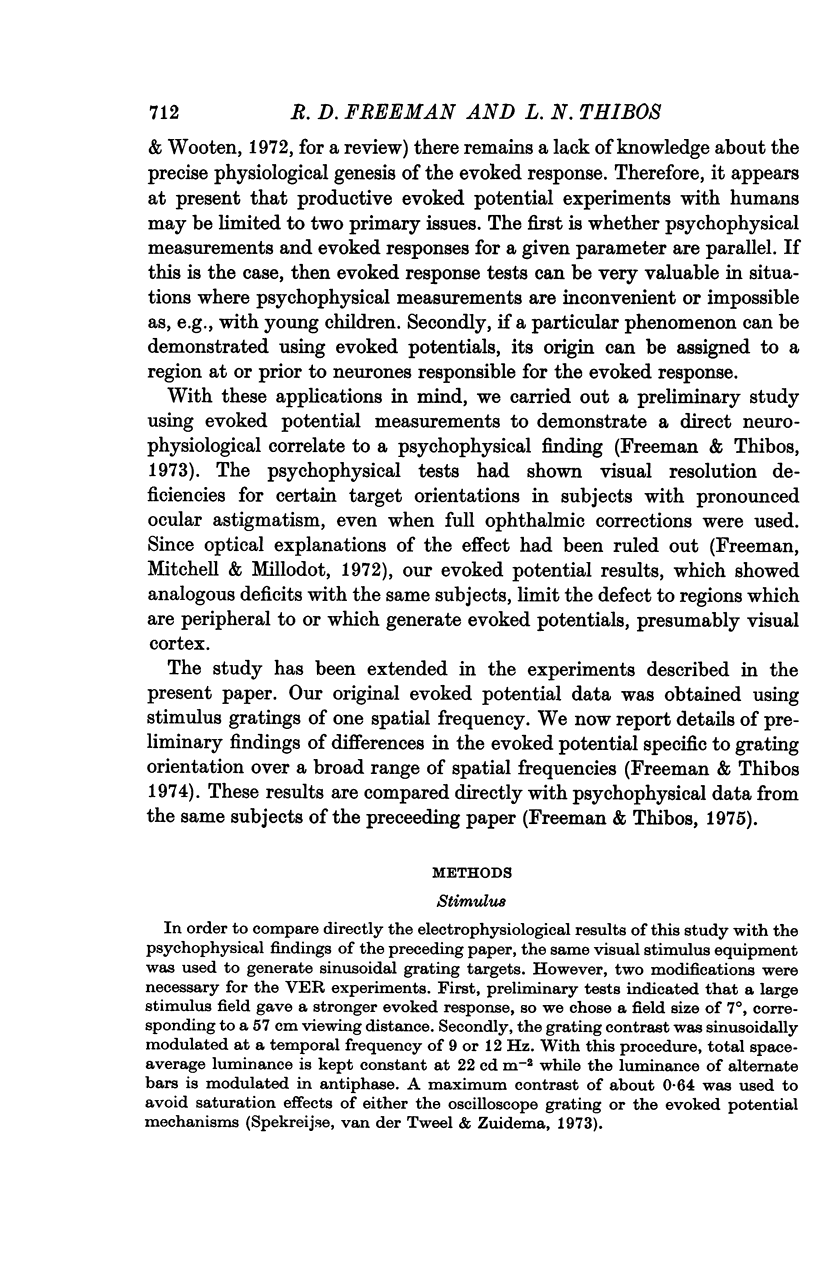
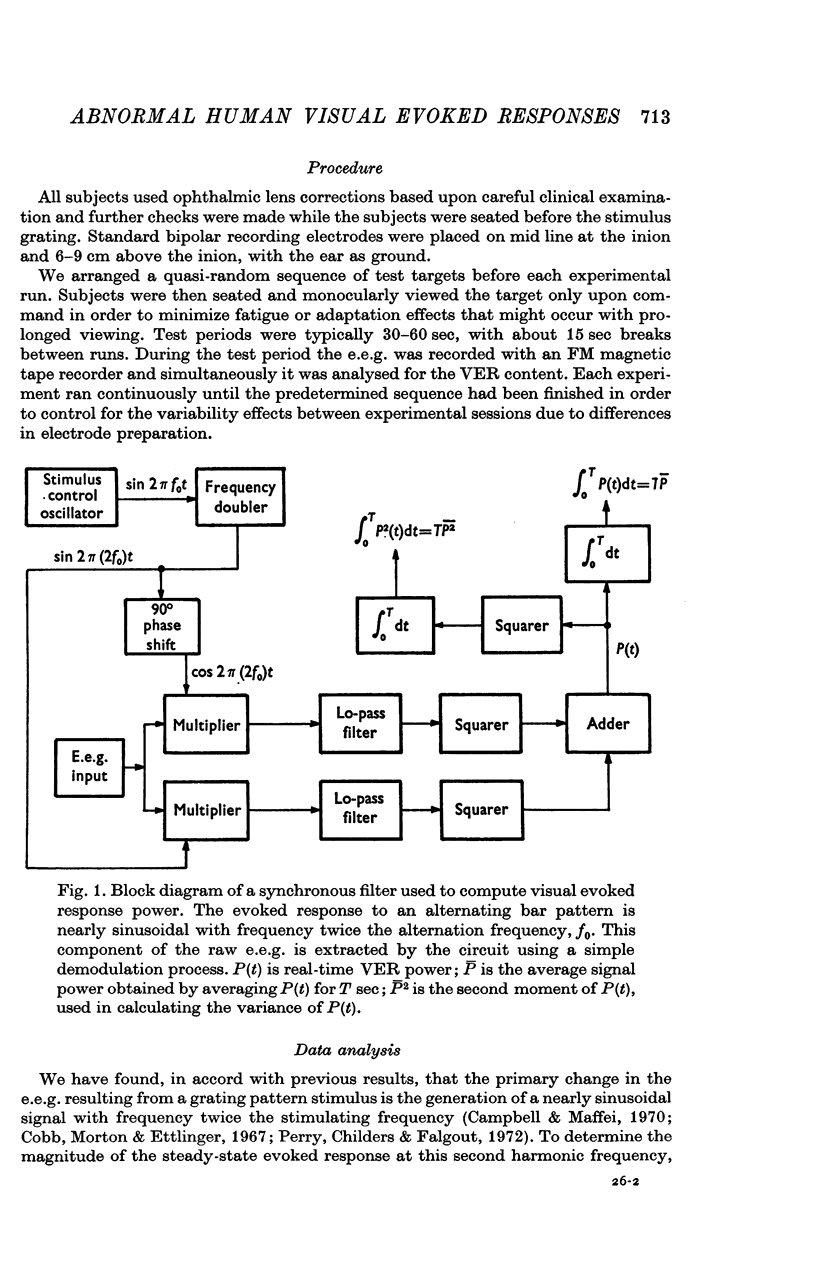
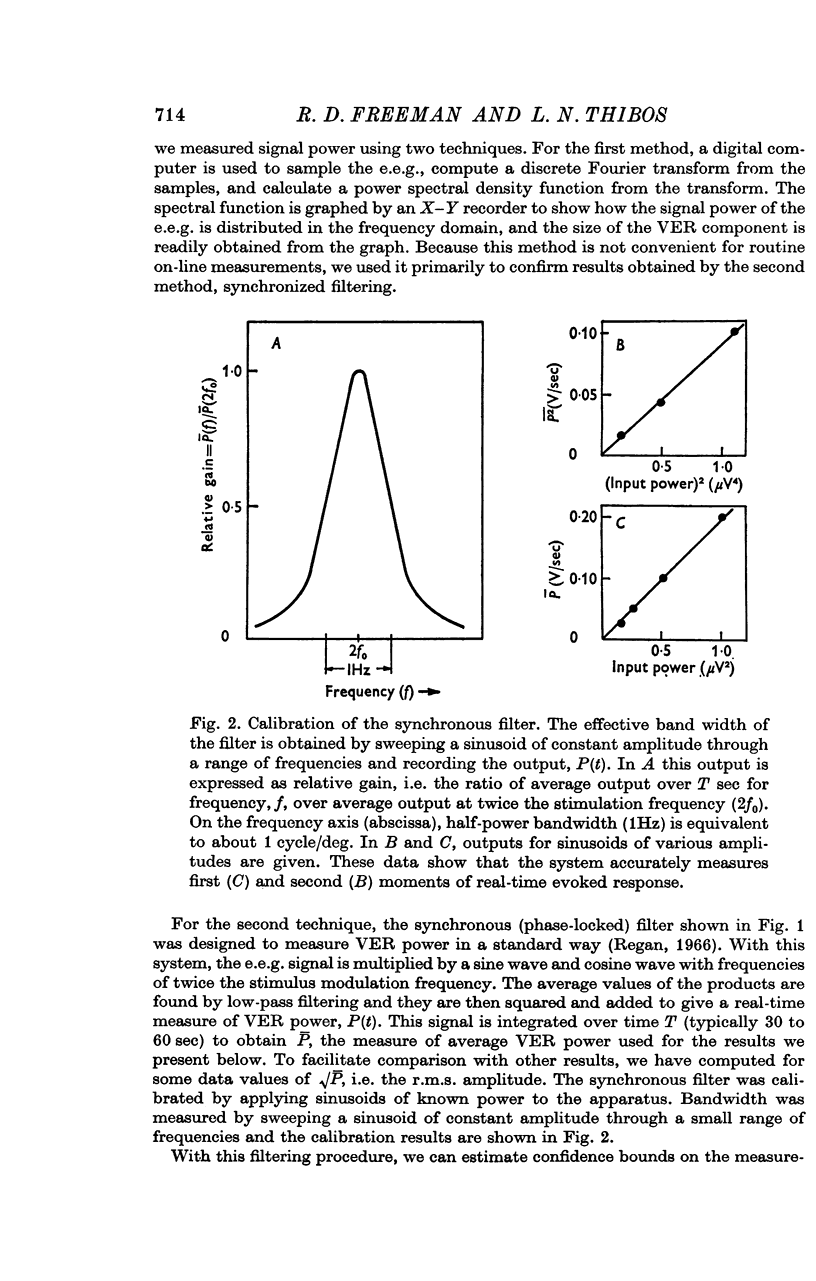
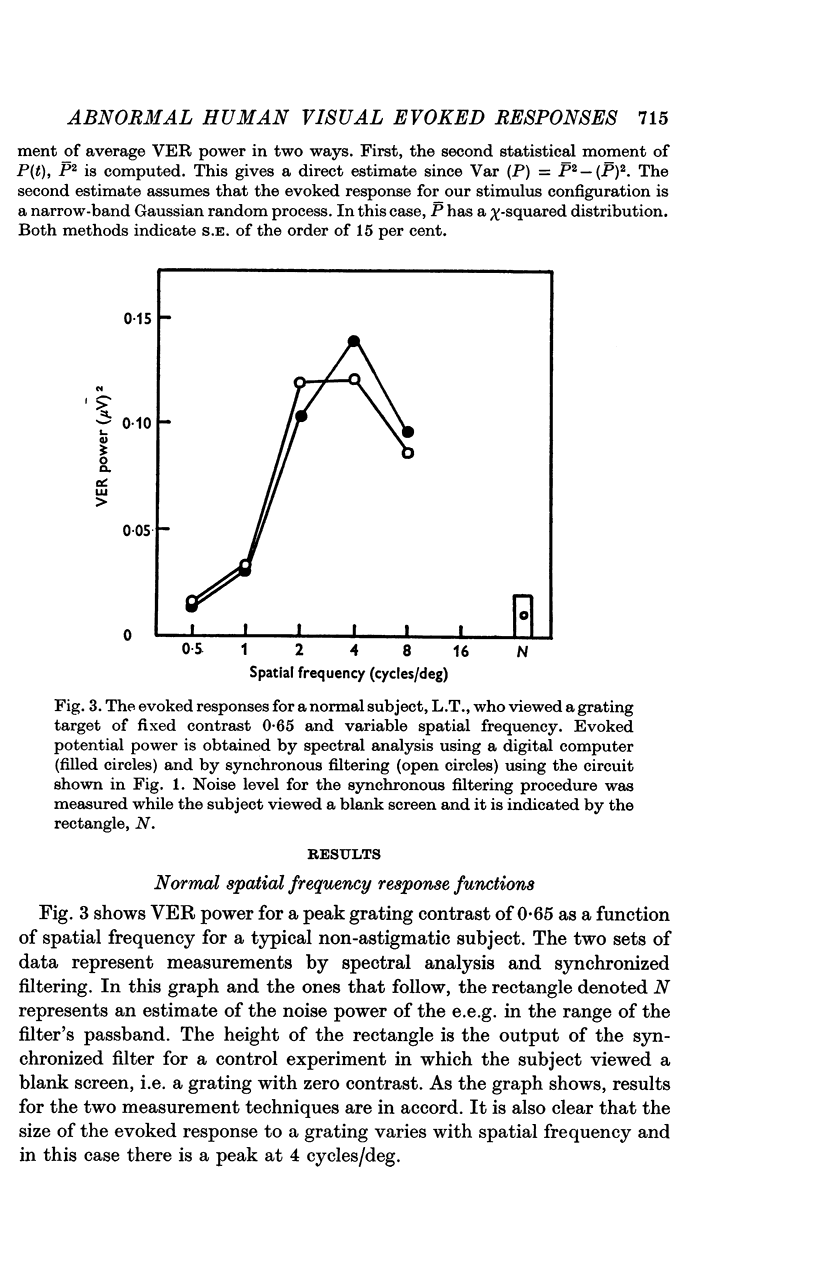
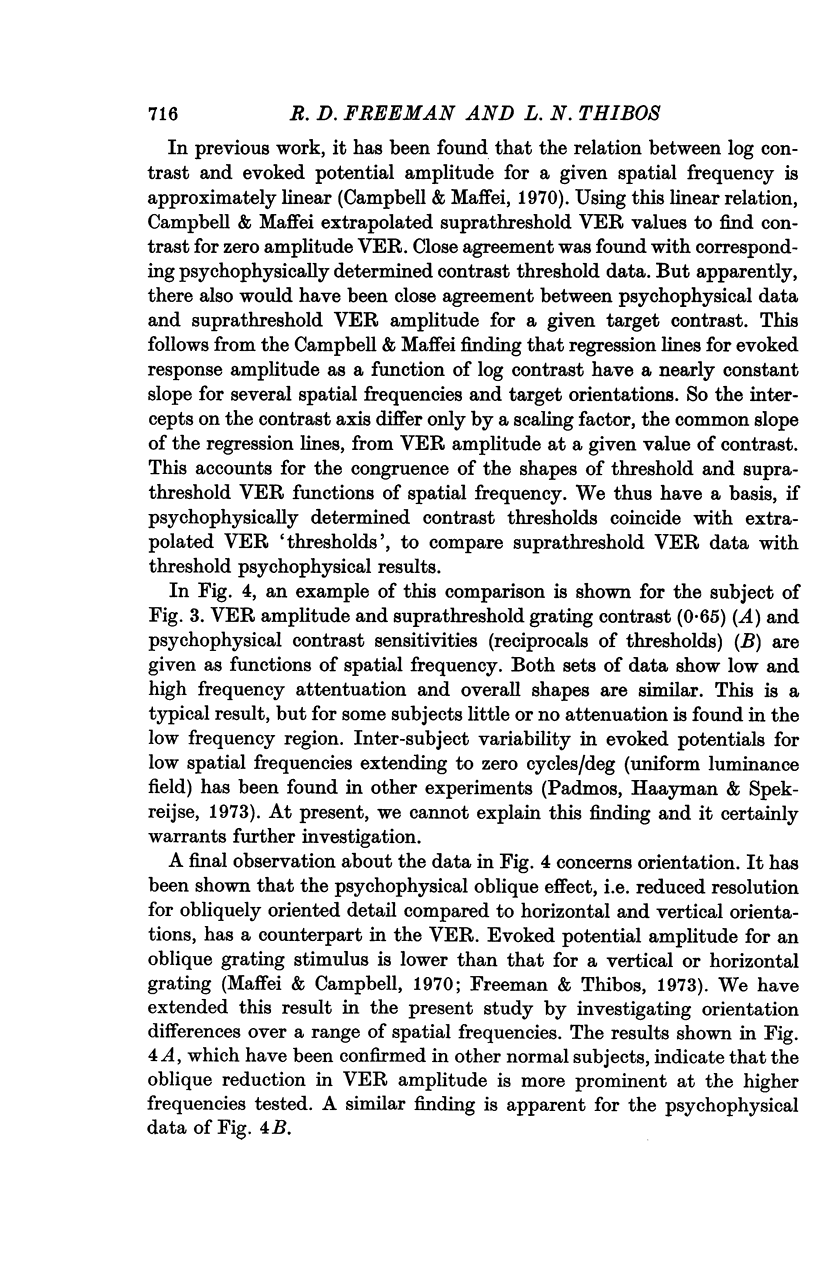
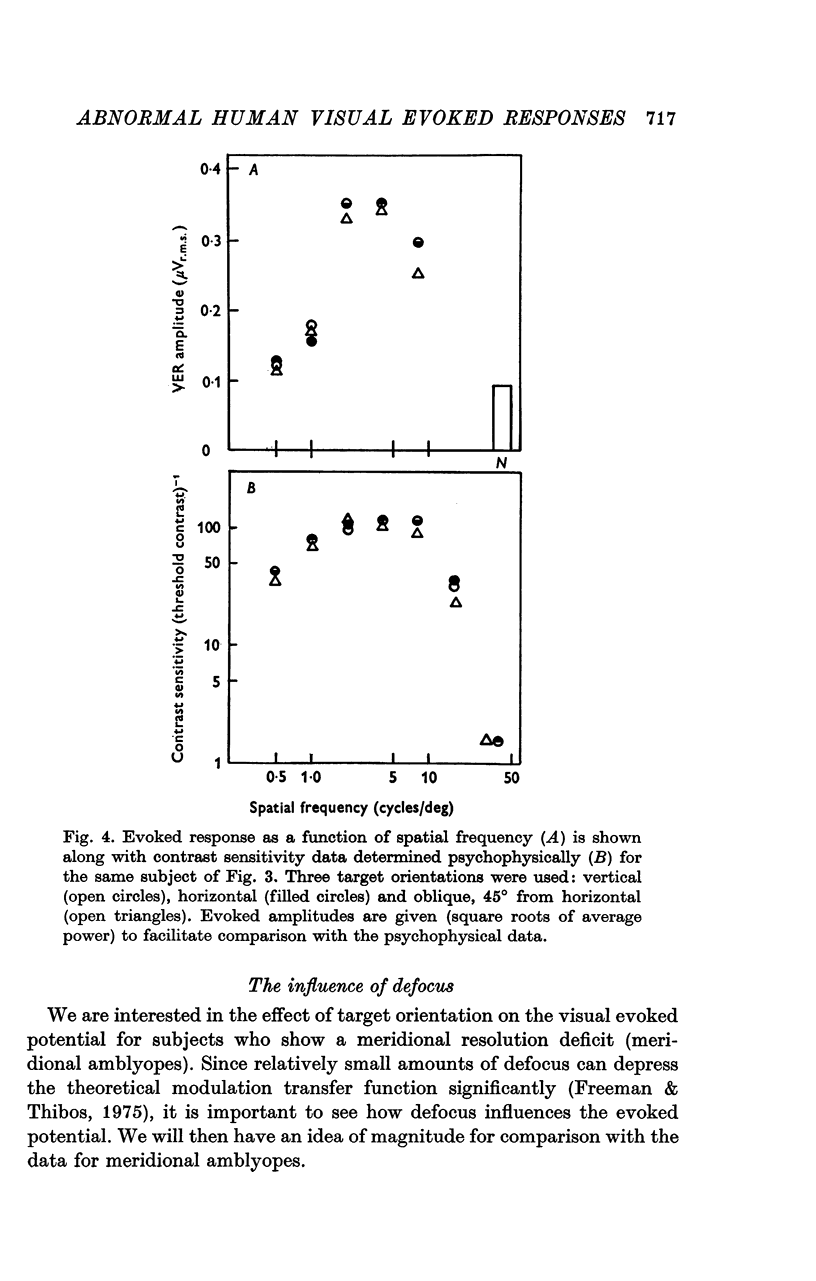
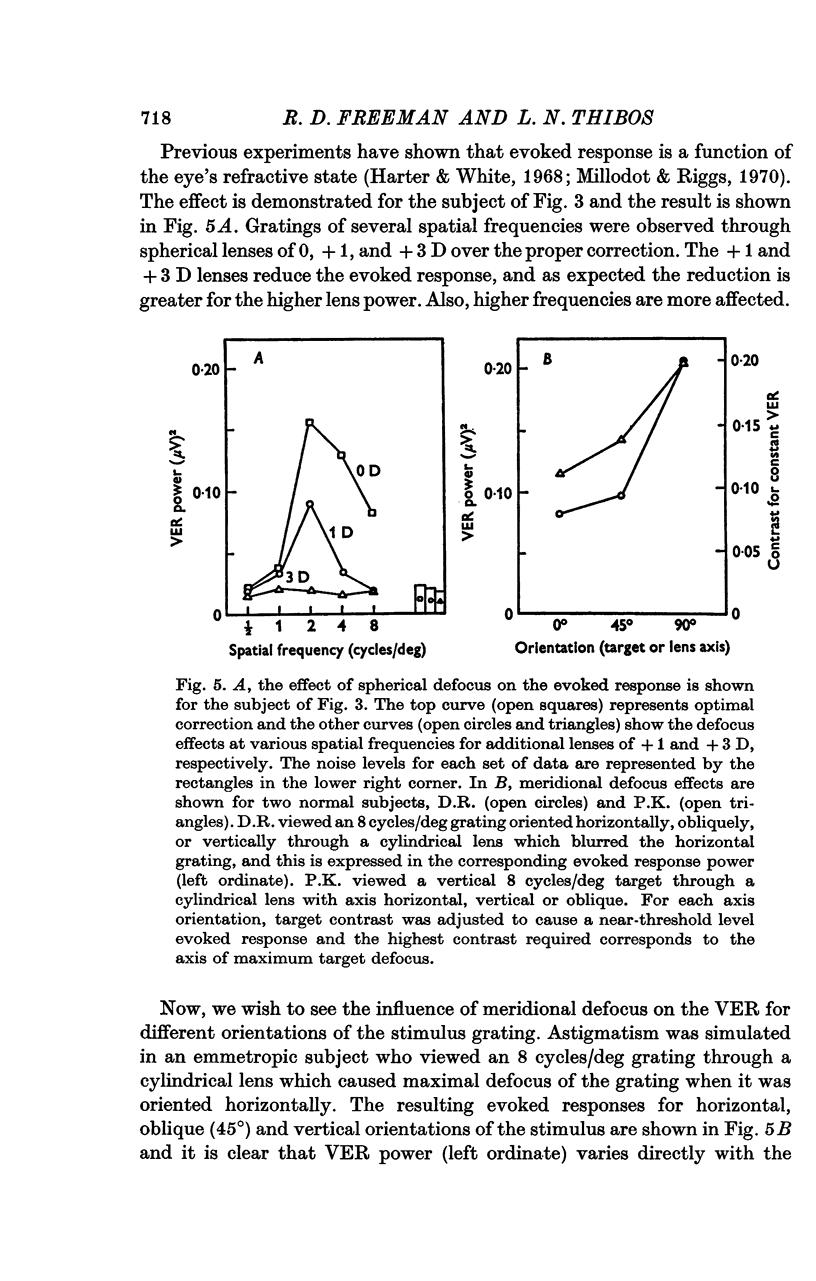
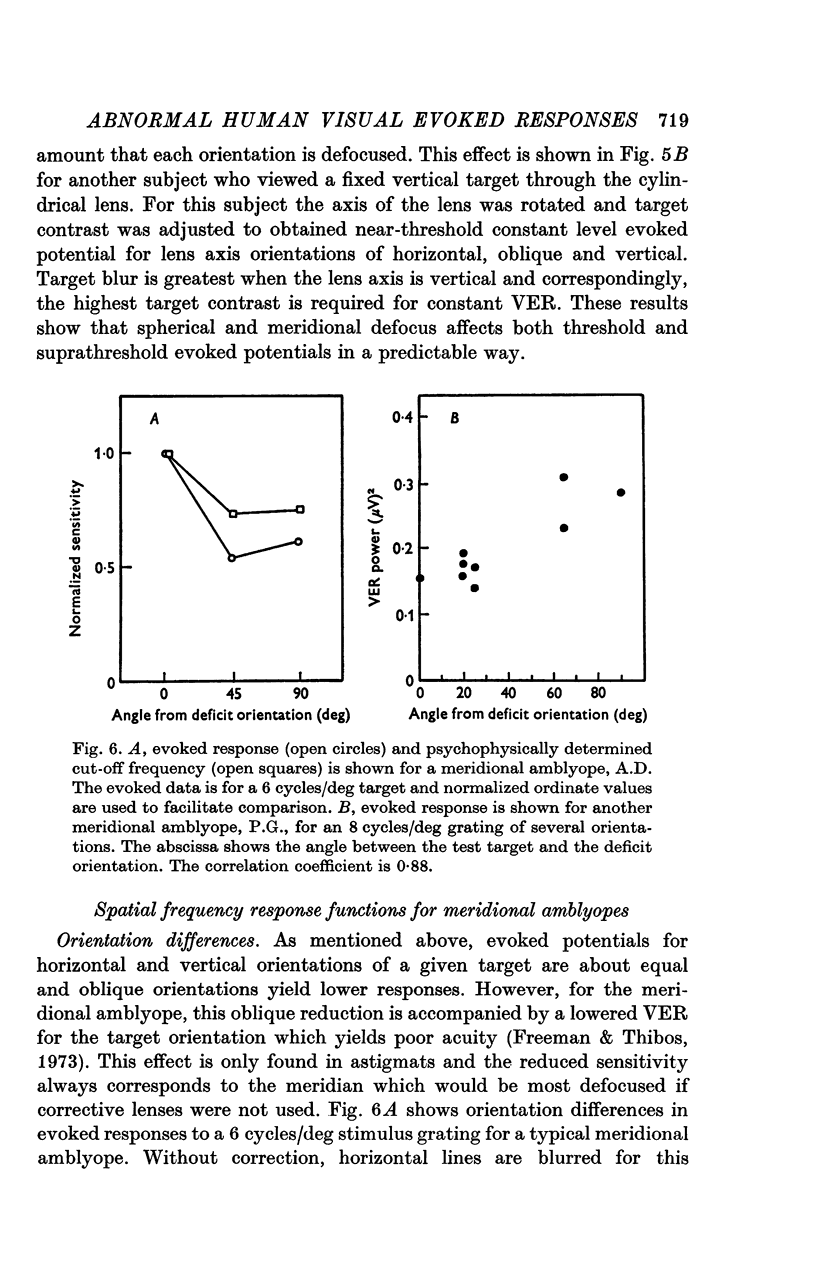
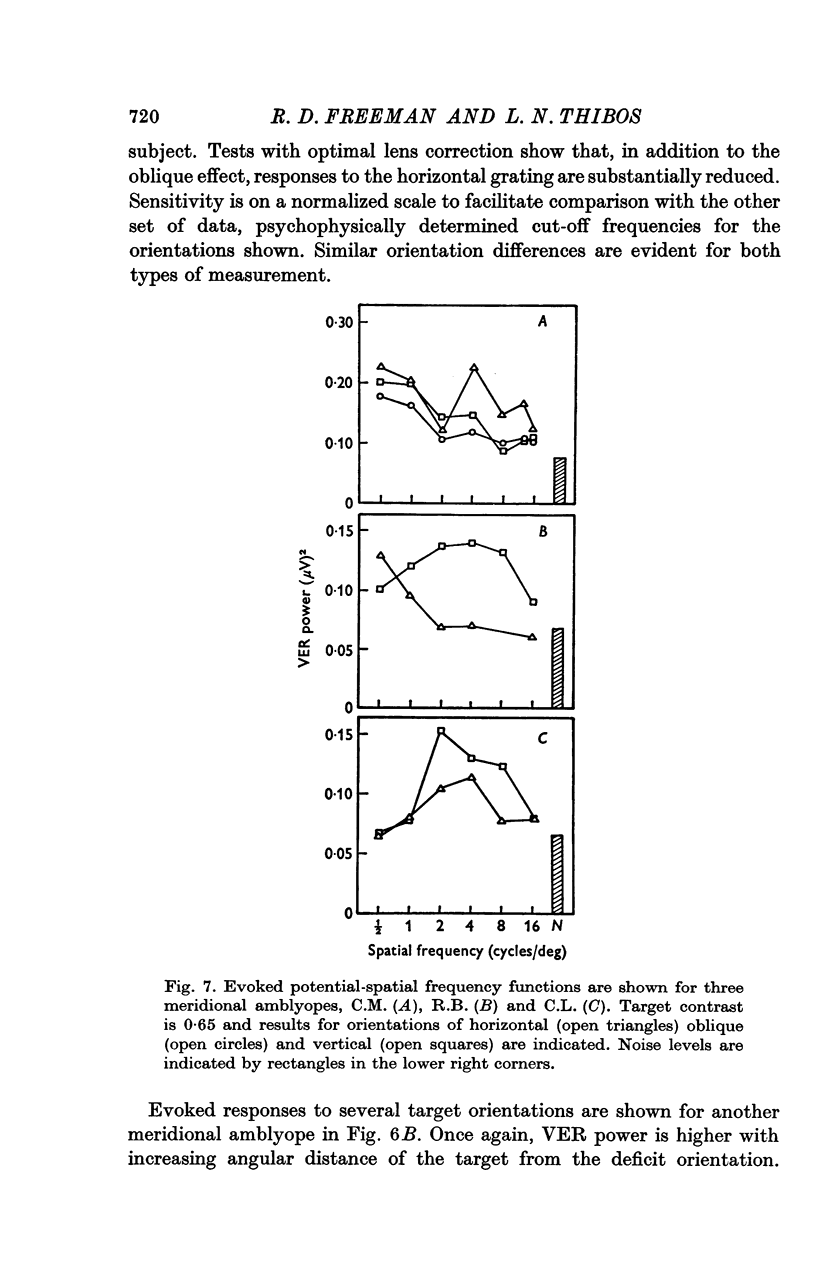
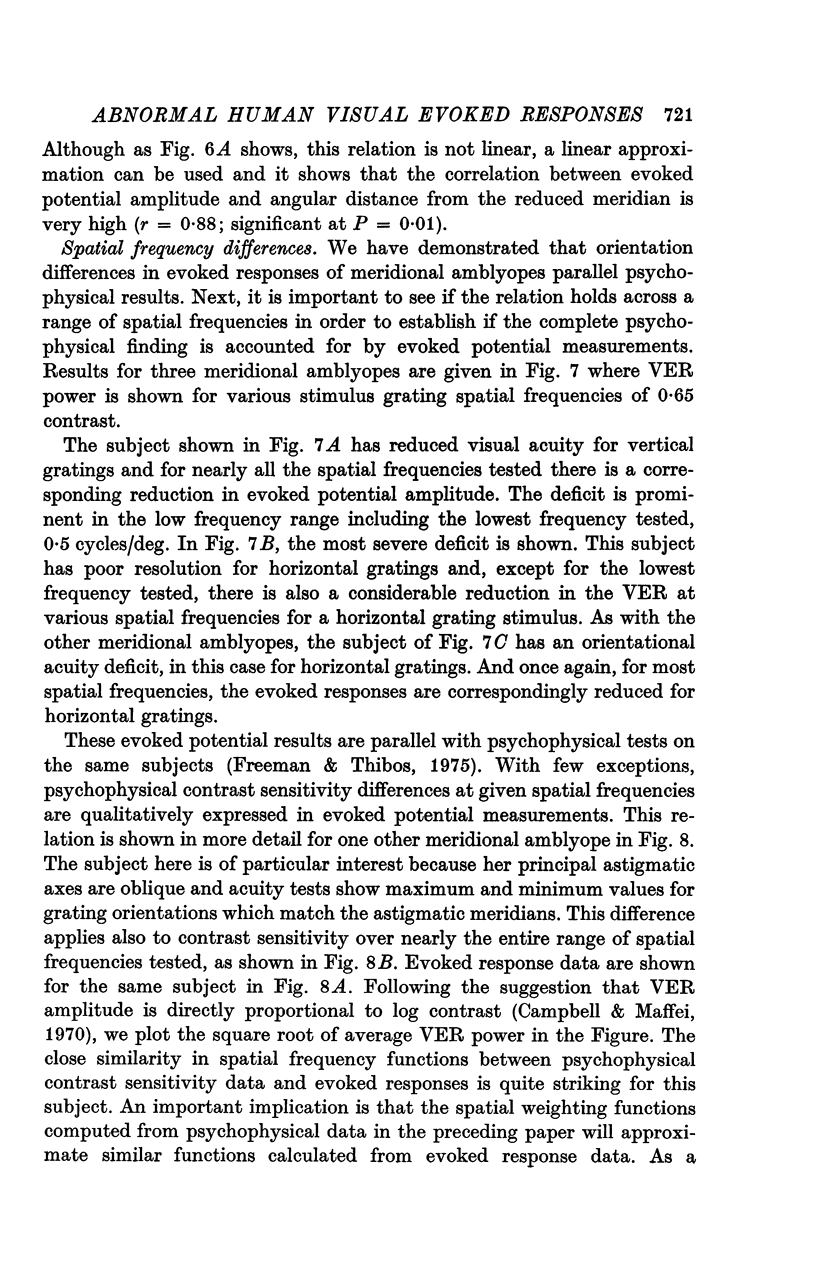
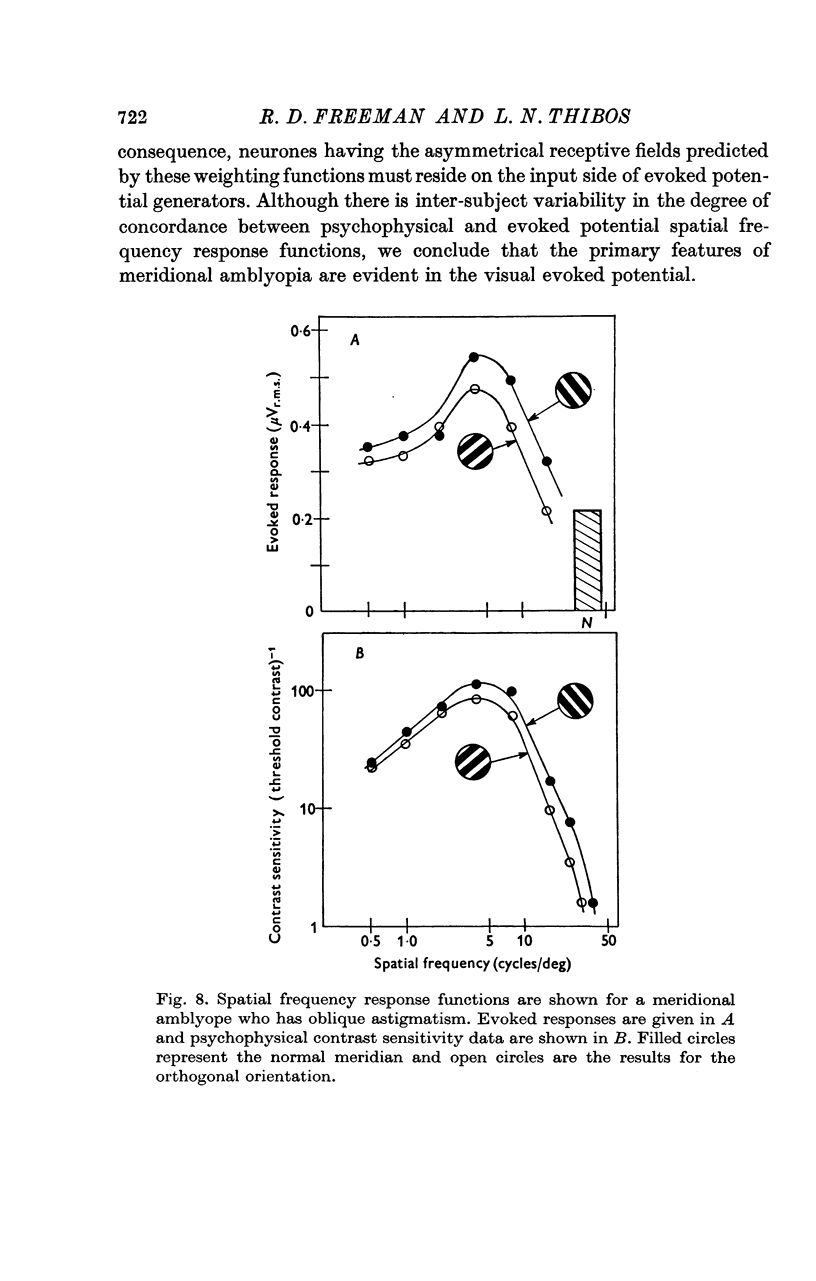
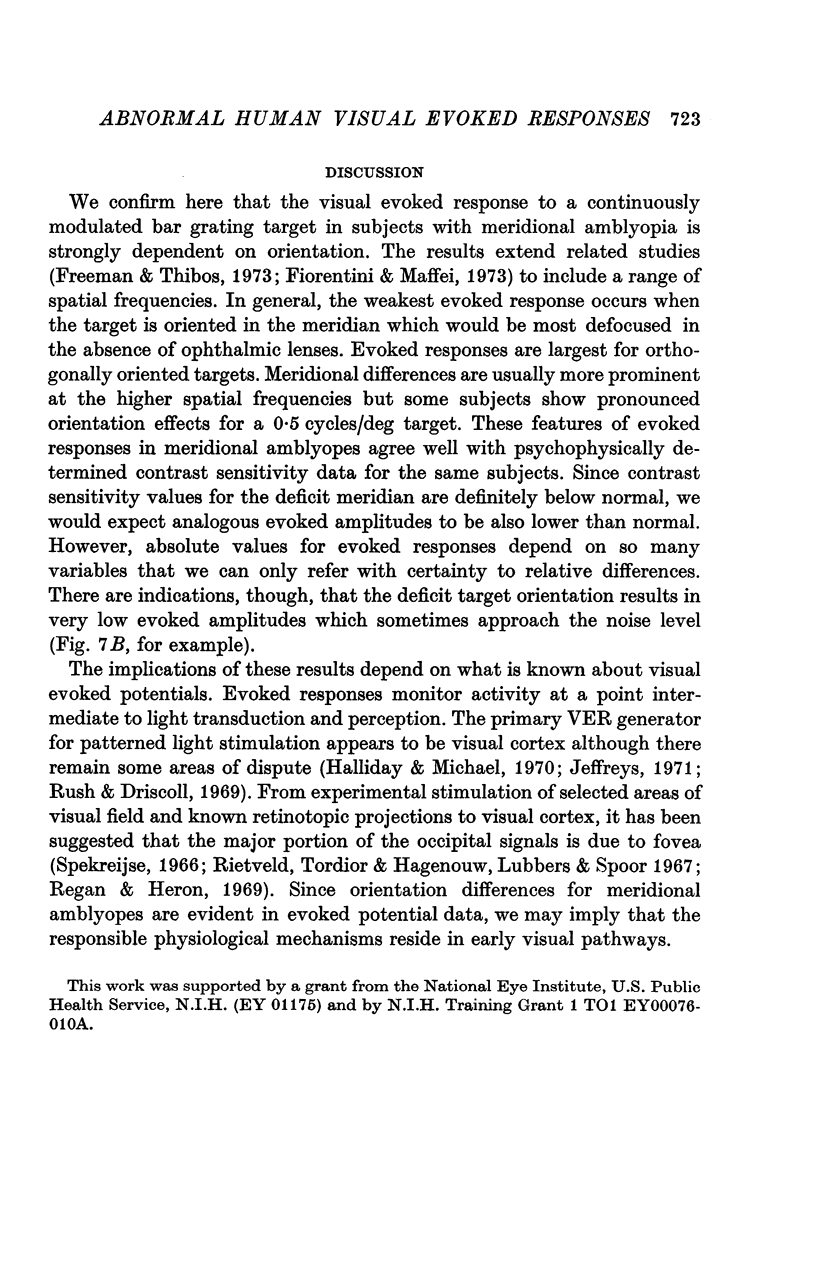
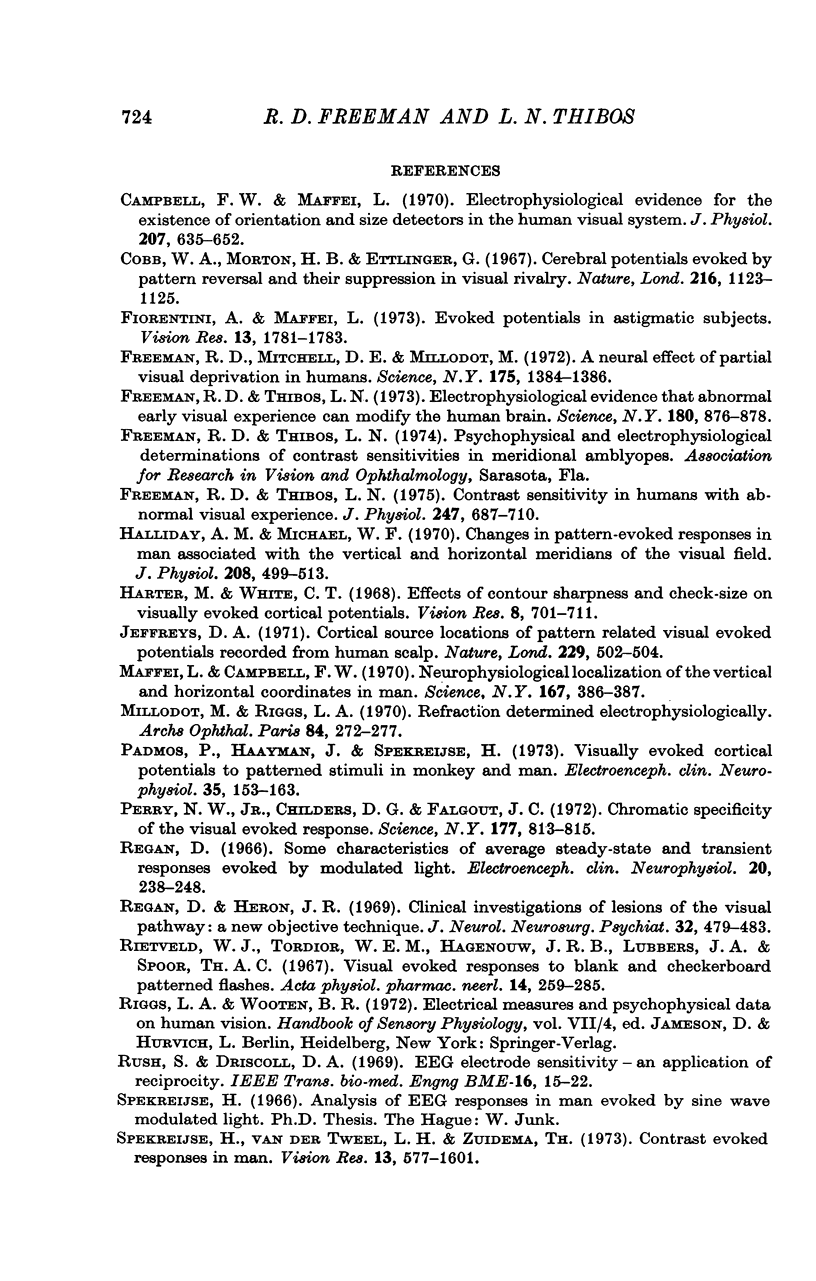
Selected References
These references are in PubMed. This may not be the complete list of references from this article.
- Campbell F. W., Maffei L. Electrophysiological evidence for the existence of orientation and size detectors in the human visual system. J Physiol. 1970 May;207(3):635–652. doi: 10.1113/jphysiol.1970.sp009085. [DOI] [PMC free article] [PubMed] [Google Scholar]
- Cobb W. A., Morton H. B., Ettlinger G. Cerebral potentials evoked by pattern reversal and their suppression in visual rivalry. Nature. 1967 Dec 16;216(5120):1123–1125. doi: 10.1038/2161123b0. [DOI] [PubMed] [Google Scholar]
- Fiorentini A., Maffei L. Evoked potentials in astigmatic subjects. Vision Res. 1973 Sep;13(9):1781–1783. doi: 10.1016/0042-6989(73)90095-3. [DOI] [PubMed] [Google Scholar]
- Freeman R. D., Mitchell D. E., Millodot M. A neural effect of partial visual deprivation in humans. Science. 1972 Mar 24;175(4028):1384–1386. doi: 10.1126/science.175.4028.1384. [DOI] [PubMed] [Google Scholar]
- Freeman R. D., Thibos L. N. Contrast sensitivity in humans with abnormal visual experience. J Physiol. 1975 Jun;247(3):687–710. doi: 10.1113/jphysiol.1975.sp010952. [DOI] [PMC free article] [PubMed] [Google Scholar]
- Freeman R. D., Thibos L. N. Electrophysiological evidence that abnormal early visual experience can modify the human brain. Science. 1973 May 25;180(4088):876–878. doi: 10.1126/science.180.4088.876. [DOI] [PubMed] [Google Scholar]
- Halliday A. M., Michael W. F. Changes in pattern-evoked responses in man associated with the vertical and horizontal meridians of the visual field. J Physiol. 1970 Jun;208(2):499–513. doi: 10.1113/jphysiol.1970.sp009134. [DOI] [PMC free article] [PubMed] [Google Scholar]
- Harter M. R., White C. T. Effects of contour sharpness and check-size on visually evoked cortical potentials. Vision Res. 1968 Jun;8(6):701–711. doi: 10.1016/0042-6989(68)90044-8. [DOI] [PubMed] [Google Scholar]
- Jeffreys D. A. Cortical source locations of pattern-related visual evoked potentials recorded from the human scalp. Nature. 1971 Feb 12;229(5285):502–504. doi: 10.1038/229502a0. [DOI] [PubMed] [Google Scholar]
- Maffei L., Campbell F. W. Neurophysiological localization of the vertical and horizontal visual coordinates in man. Science. 1970 Jan 23;167(3917):386–387. doi: 10.1126/science.167.3917.386. [DOI] [PubMed] [Google Scholar]
- Millodot M., Riggs L. A. Refraction determined electrophysiologically. Responses to alternation of visual contours. Arch Ophthalmol. 1970 Sep;84(3):272–278. doi: 10.1001/archopht.1970.00990040274003. [DOI] [PubMed] [Google Scholar]
- Padmos P., Haaijman J. J., Spekreuse H. Visually evoked cortical potentials to patterned stimuli in monkey and man. Electroencephalogr Clin Neurophysiol. 1973 Aug;35(2):153–163. doi: 10.1016/0013-4694(73)90171-5. [DOI] [PubMed] [Google Scholar]
- Perry N. W., Jr, Childers D. G., Falgout J. C. Chromatic specificity of the visual evoked response. Science. 1972 Sep 1;177(4051):813–815. doi: 10.1126/science.177.4051.813. [DOI] [PubMed] [Google Scholar]
- Regan D., Heron J. R. Clinical investigation of lesions of the visual pathway: a new objective technique. J Neurol Neurosurg Psychiatry. 1969 Oct;32(5):479–483. doi: 10.1136/jnnp.32.5.479. [DOI] [PMC free article] [PubMed] [Google Scholar]
- Regan D. Some characteristics of average steady-state and transient responses evoked by modulated light. Electroencephalogr Clin Neurophysiol. 1966 Mar;20(3):238–248. doi: 10.1016/0013-4694(66)90088-5. [DOI] [PubMed] [Google Scholar]
- Rietveld W. J., Tordoir W. E., Hagenouw J. R., Lubbers J. A., Spoor T. A. Visual evoked responses to blank and to checkerboard patterned flashes. Acta Physiol Pharmacol Neerl. 1967;14(3):259–285. [PubMed] [Google Scholar]
- Rush S., Driscoll D. A. EEG electrode sensitivity--an application of reciprocity. IEEE Trans Biomed Eng. 1969 Jan;16(1):15–22. doi: 10.1109/tbme.1969.4502598. [DOI] [PubMed] [Google Scholar]
- Spekreijse H., van der Twell L. H., Zuidema T. Contrast evoked responses in man. Vision Res. 1973 Aug;13(8):1577–1601. doi: 10.1016/0042-6989(73)90016-3. [DOI] [PubMed] [Google Scholar]


